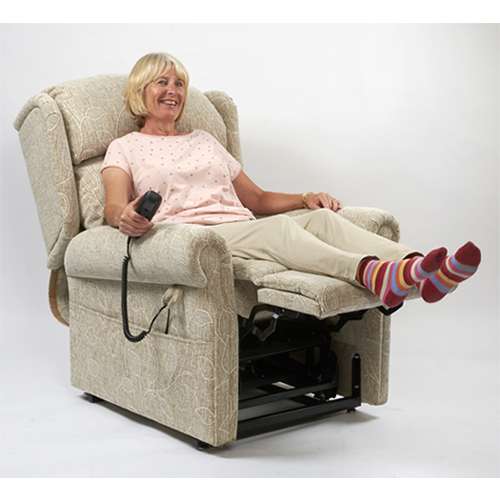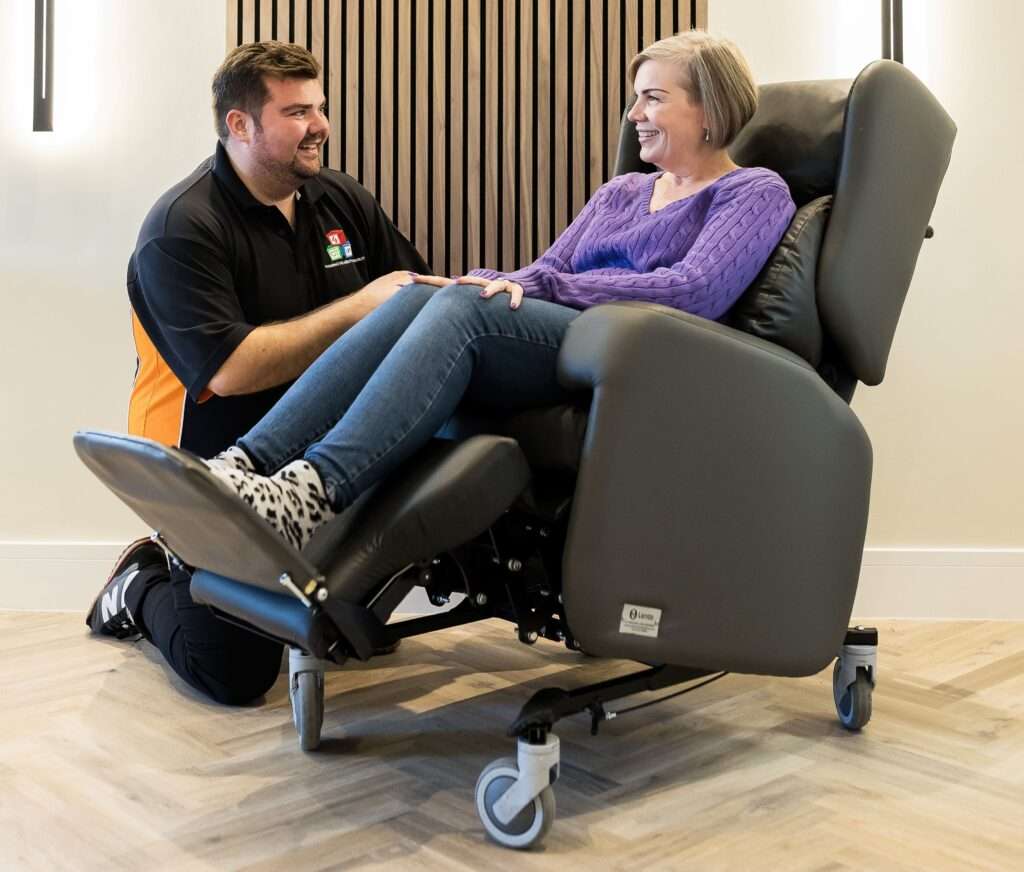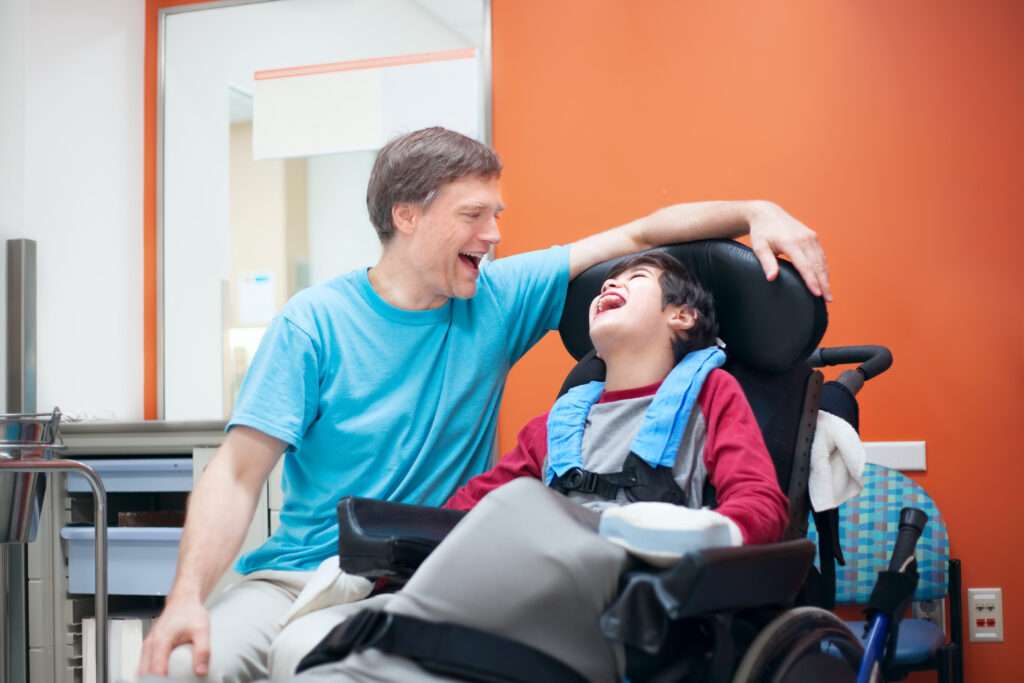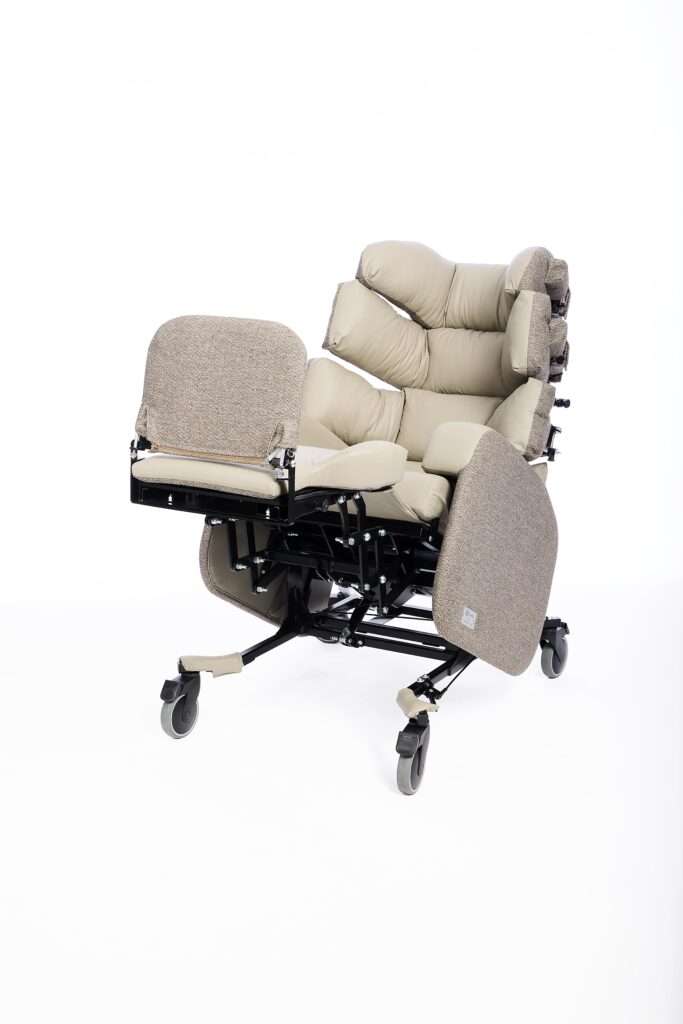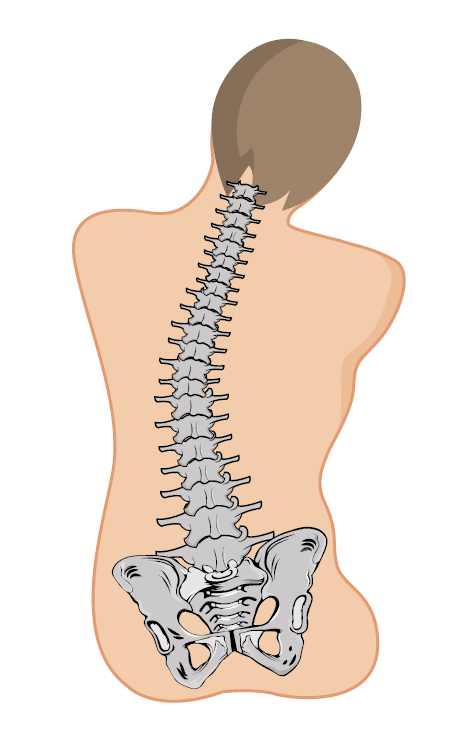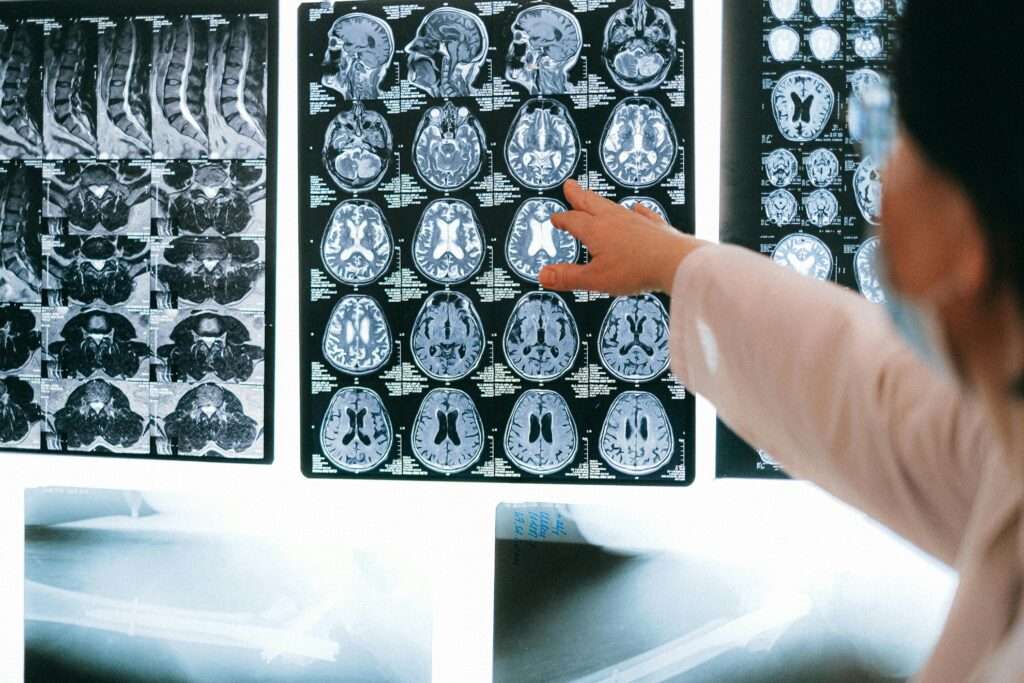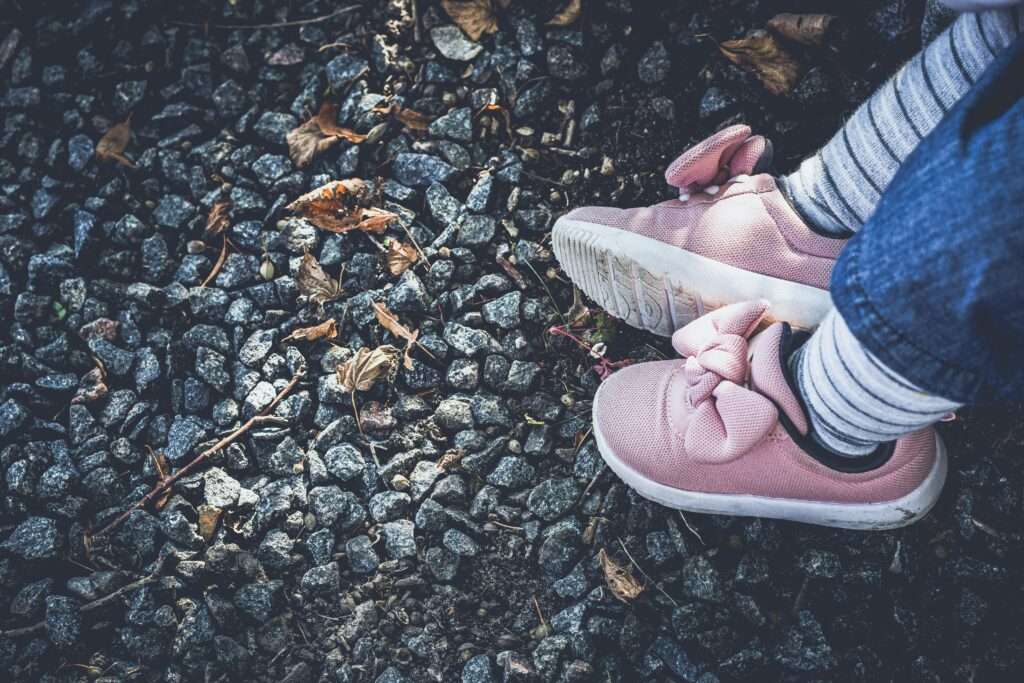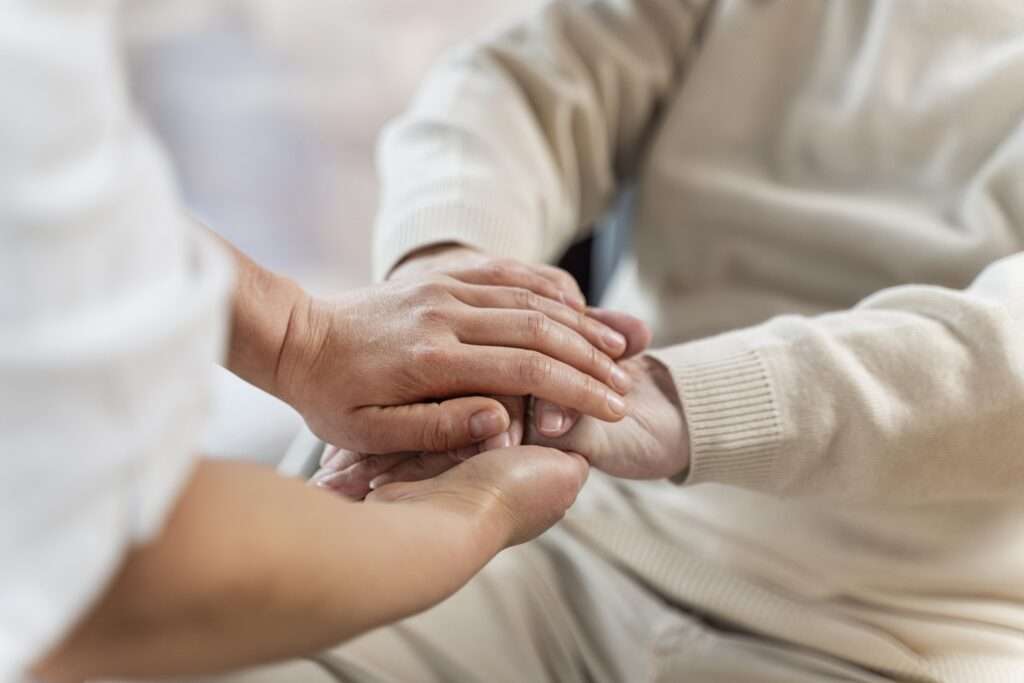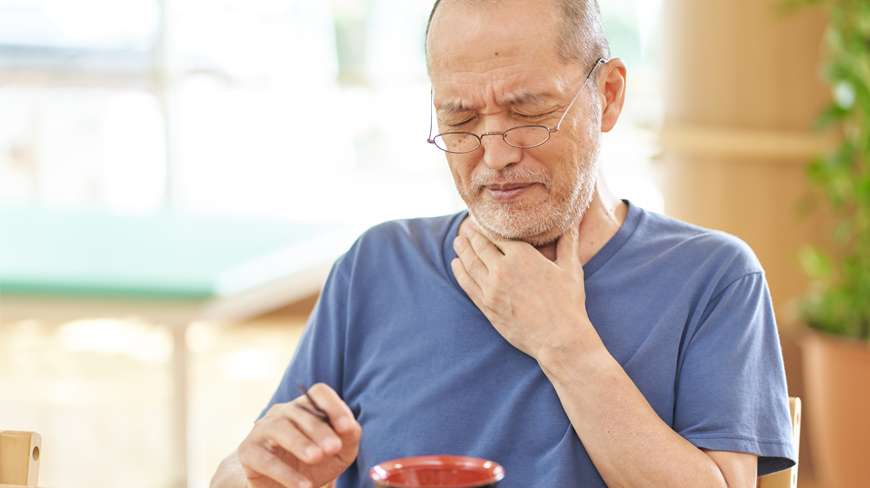Swollen feet or oedema (caused by a build-up of fluid in a particular area of the body, making the affected area swollen), can cause considerable discomfort to those suffering with it and significantly impact daily life, even when sitting down. A persistent sensation of heaviness, tightness, and even pain in the affected area (usually the feet and/or legs) results in impeded mobility, less ability to engage in daily routines, disrupted sleep patterns, and an overall lower quality of life.
For those with persistent swelling, choosing the right chair, or even the best footstool for swollen feet, can play a major role in improving comfort and circulation.
Specialist care seating can make a big difference in alleviating some of the pain and symptoms associated with swelling and oedema. In this article we will dive deeper into how you can better understand the condition and bring comfort to your loved one, client, or patient.
We will cover three main areas:
Jump straight to...
Understanding Swollen Feet and Oedema
As already stated, oedema is caused by a build-up of excess fluid in a particular area of the body, making the affected area swollen and very uncomfortable. It is particularly common in the feet and lower extremities, known as leg edema, due to downward pressure from body weight, or spending a lot of time sitting or lying down.
In some cases, prolonged sitting in certain positions for example when sleeping can cause poor circulation, leading many to ask: can sleeping in a chair cause swollen ankles? Unfortunately it can, if your feet aren’t elevated.
Some of the tell-tale signs of oedema are swelling and puffy skin around the calves and ankles, stretched/shiny skin, swelling of the abdomen, and limbs feeling particularly heavy, tight, and painful. Leg edema can make daily life a real struggle — walking, wearing shoes, and even just moving becomes painful and difficult due to the stiffness in the joints and ankles. It is only natural that people with the condition then tend to stay sitting for longer periods to avoid that discomfort, but this only exacerbates the problem further and introduces new risks such as development of pressure ulcers, and postural issues.
Causes of Oedema
Oedema can be caused by many different factors. Long periods of immobility are perhaps the most common cause, but some others include:
Pregnancy
The pressure of an expanding womb can restrict blood flow in the lower limbs, causing fluid to build up in the legs and ankles.
Poor diet
Eating too much salty food causes increased water retention from the increase in sodium levels, leading to swelling.

Underlying medical conditions
Oedema can be a symptom of underlying conditions such as congestive heart failure, kidney disease, or venous insufficiency.
Specific types of oedema like lymphoedema are caused by dysfunction of the lymphatic system, which helps drain away fluid and proteins from the body tissues.
Medications
Certain blood pressure medications and anti-inflammatory drugs can cause fluid retention as a side effect.

Limb amputation
Trauma around the stump area following a limb amputation, combined with reduced muscle tone and activity, can lead to swelling.
Need A Chair To Help Support You?
Key Features to Look for in Chairs for Swollen Feet
Understanding the profound impact of swollen feet and oedema on both physical and emotional wellbeing underscores the importance of finding effective solutions to care for those suffering with the condition. Specialist seating emerges as a valuable intervention to help alleviate pain, improve comfort, and enhance the overall quality of life for these individuals.
The following chair features are our top picks for you to look out for when purchasing a care chair for someone with swollen feet or oedema:
Elevating Legrest
The elevating legrests built into most standard riser recliner chairs allow people to elevate their legs at the touch of a button, helping their blood circulation and reducing swelling. The best chair for elevating legs is usually a dual motor chair, which has independent footrests allowing movement of the legs without changing sitting posture.
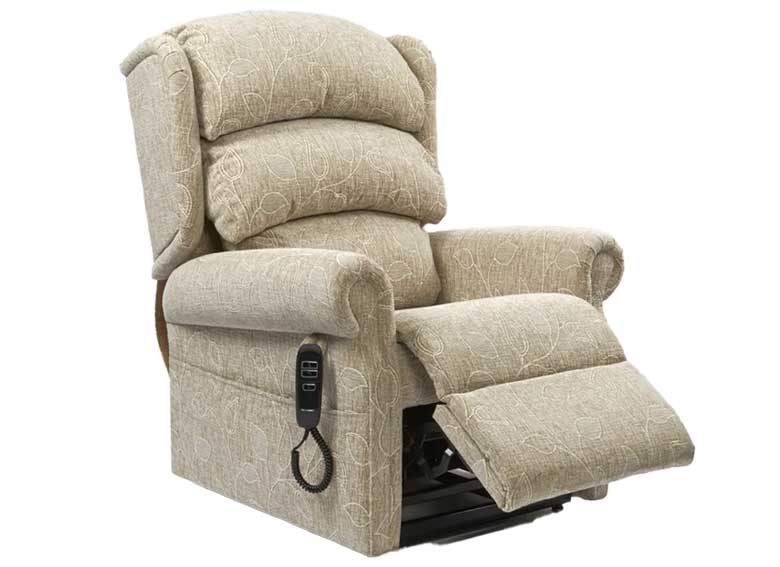
Elevating legrest
Adjustable Footplate
Our Lento Care Chair has an angle-adjustable footplate that slides up and down, ideal for managing leg elevation and finding the most comfortable position for those needing the best footstool for swollen feet. The articulating legrest on the Lento can be extended to accommodate leg length, with extra padding to ease the pressure on swollen legs.
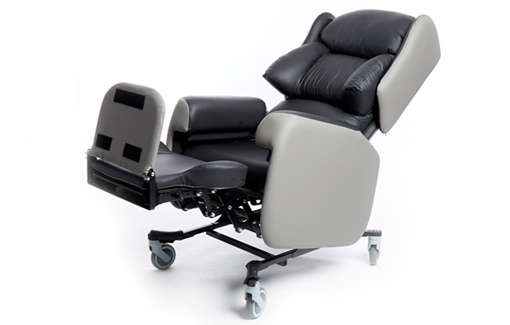
Lento Care Chair articulating legrest
Tilt in Space
A greater angle of tilt-in-space improves blood flow, helping to improve muscle health and drain the build-up of fluid. When someone is sitting in an upright position, 94% of their body weight is supported through their feet, buttocks and thighs, putting more pressure on blood flow in these areas. However, as the angle of the chair is tilted back as shown in the diagram below, the weight of the person is distributed more evenly across the body, and blood circulation improves. This increases the flow of oxygen in the blood through the limbs, keeping muscle tissue healthy and preventing the build-up of impurities and fluid.
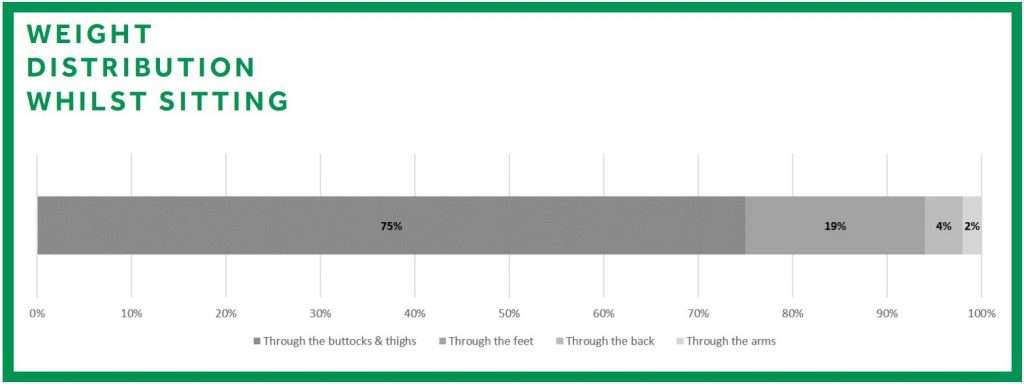
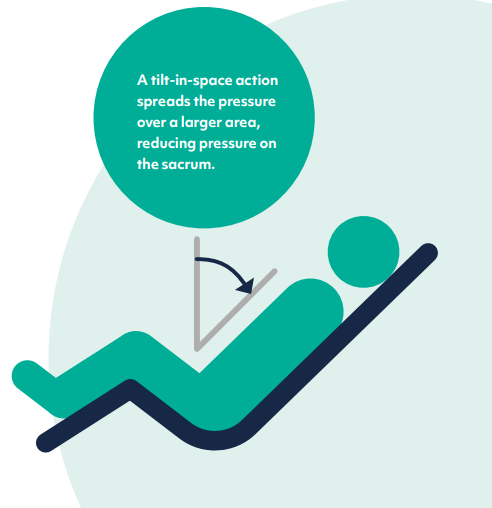
Tilt-in-space functionality
Breathable Fabric
The dartex on our Lento chair is vapour-permeable which means it reduces moisture build-up and ventilates the skin. This keeps the skin hydrated, helping any infections clear up that have caused the swelling.
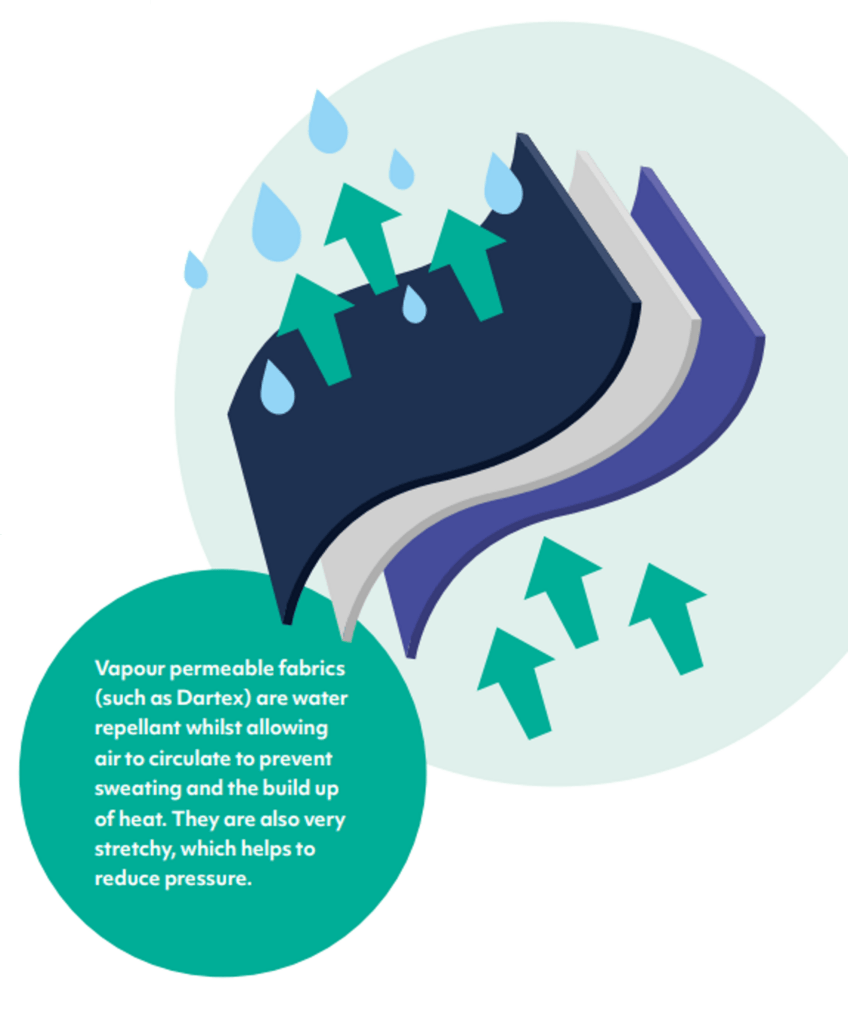
Properties of vapour-permeable fabric
Higher Pressure Relief
Gel drop-in cushions provide a higher degree of pressure relief for someone who has had a leg amputation. The stump area of an amputated limb is a very sensitive area especially when the tissues are healing. It can be numb and painful, particularly as new blood vessels and nerve endings are forming. A replacement gel cushion or a layer of coolgel in the legrest wrap takes the pressure of the protruding area of the stump, promoting healing and relieving discomfort.
Our Chairs Have All Of The Above!
Our Top Chair Recommendations for Managing Swelling and Oedema
Lento Care Chair
With fully adjustable seat dimensions, the Lento Care Chair is a versatile seating solution for people with more advanced postural needs.
The articulating footrest and footplate height adjustment help manage swelling in the lower limbs, and it can be upgraded to higher spec pressure relief, making it a strong contender for the best chair for elevating legs.
The Lento Care chair is designed to assist each person on their rehabilitation journey, promoting better skin health, circulation and posture with its ergonomic features. As their overall level of health improves, patients will find they are able to do things they haven’t done for a long time, like moving without pain, going to the toilet unaided or getting a better night’s sleep.
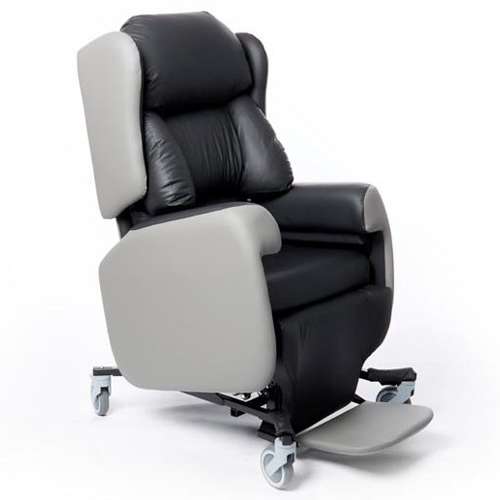
Lento Care Chair
Karma Flexx wheelchair
Useful for transporting people out and about, the Karma Flexx has adjustable seat sizing to help accommodate any swelling or protrusions the client may have.
Various accessories are available with the Flexx, such as stump supports and padded supports for amputees.
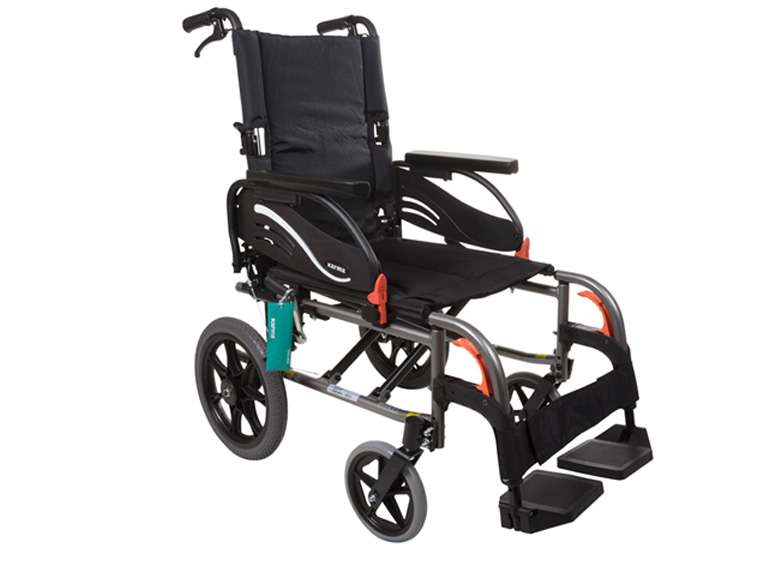
Karma Flexx
Want To Know More About These Chairs?
Frequently Asked Questions (FAQs)
What is the best chair for elevating legs?
The best chair for elevating legs typically features an independent legrest adjustment (dual motor), tilt-in-space, and ergonomic cushioning. Models like the Lento Care Chair offer optimal circulation support, pain relief, and comfort for users with swollen feet or legs.
Can sleeping in a chair cause swollen ankles?
Yes, sleeping in a chair can cause swollen ankles, especially if your legs are left in a dependent position without elevation. Blood can pool in the lower extremities, leading to fluid retention. Choosing a chair with leg elevation and recline features can help prevent this.
What is the best footstool for swollen feet?
The best footstool for swollen feet should offer adjustable height, soft yet supportive cushioning, and ideally, angle adjustment to raise the feet above heart level. Pairing it with a recliner or ergonomic care chair enhances circulation and reduces pressure.
What are the best seating features for managing oedema?
Some of the seating features in our Lento range to help with oedema are articulating footrests, adjustable footplates and tilt-in-space.
Conclusion
Despite oedema being a challenging condition that causes significant discomfort, there are thankfully various things we can do to alleviate the pain and greatly enhance quality of life for those suffering with it. Purchasing a specialist care chair with specific features in mind can make this difference! For example, you should look for chairs that allow elevation of the legs to ease pressure and reduce swelling, and then also particular backrests and cushions to ensure correct postural support which will also reduce pain in the joints.
If you’re searching for the best footstool for swollen feet or the best chair for elevating legs, our team can help you find the right solution. We have had years of experience in specifying seating for people with oedema, and would love to help you find the correct chair for your loved one or client.
Book a seating assessment with one of our friendly care experts, who will join you and the user at their place of residence, to trial different chair options and find the one that brings the highest levels of comfort and care.
Free & No Obligation Assessment





